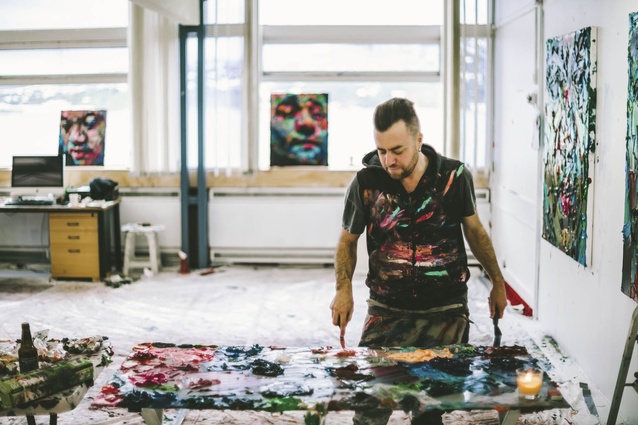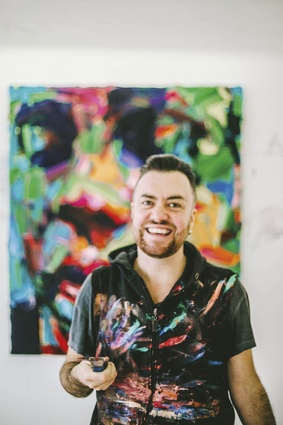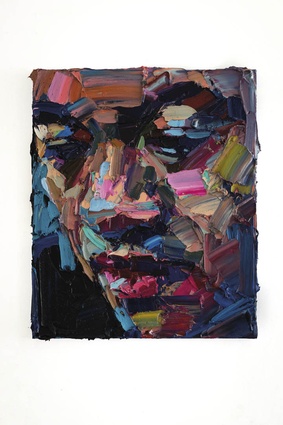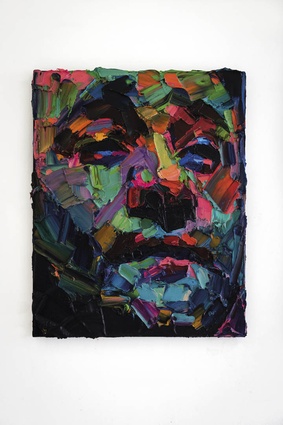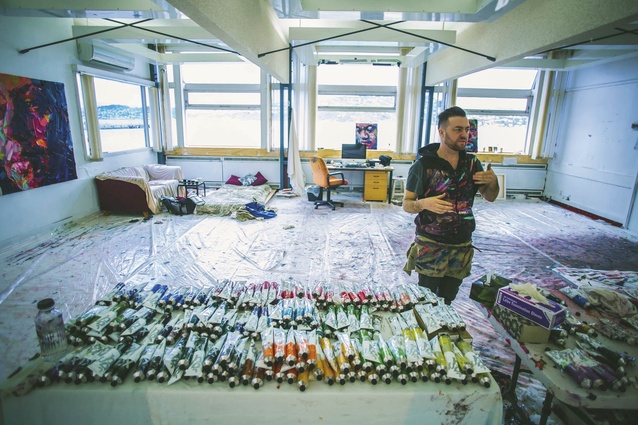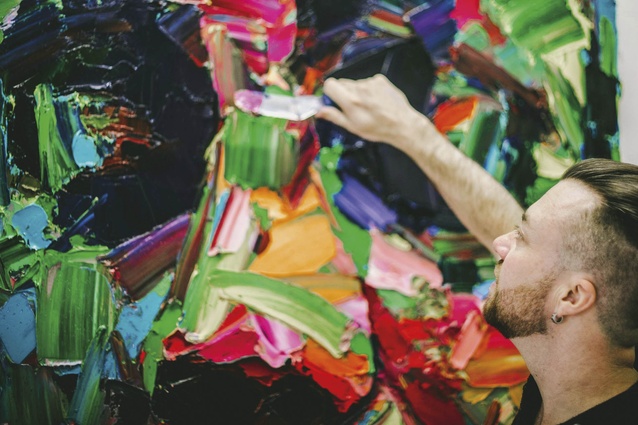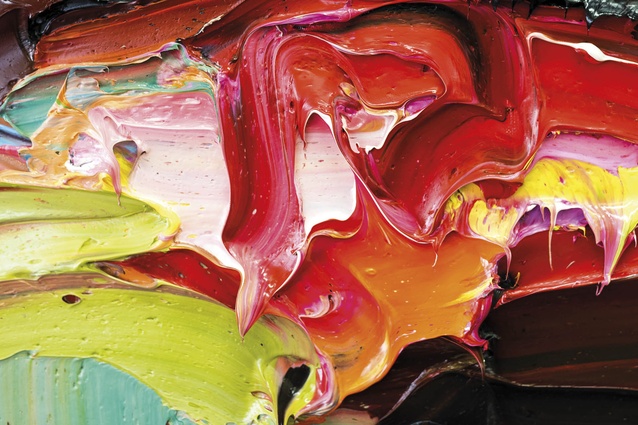A chat with Jack Trolove
Working from his Wellington studio, an ex-air force base overlooking Shelly Bay, Jack Trolove creates his large works in a dynamic and fast-paced manner. Camille Khouri spoke with Trolove about his art, studio and his Auckland exhibition.
Camille: Is painting your full-time job?
Jack: I do some contract work around suicide prevention, mental health and within the LGBTI community. It sometimes feels like my painting is connected to this work in some way. It used to be even more connected – I did a show in Adelaide in 2014 that ended up being quite connected to the suicide prevention work. But back then I was working four days per week, painting two or three.
Now the balance is the opposite. Now, in my other work, I often do strategic stuff. It feels exciting now that I am able to paint more. My studio is in the old air force base in Shelly Bay, right on the waterfront. It has huge windows and big walls. It is the dream spot, and when you’re doing big work you need space.
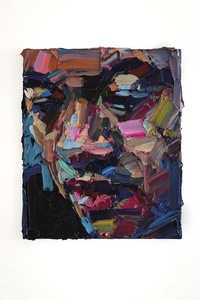
Camille: What is your educational background? Did you attend art school or are you self-taught?
Jack: I did an undergraduate visual arts degree in Nelson at MIT about 20 years ago, then I lived and worked overseas for a long time.
I was in Barcelona for three years, then Glasgow, then I came back home and did a master’s degree in Wellington; to be honest, mostly because I needed the studio space. Since then, I have been working between Wellington and Auckland.
Camille: The paint appears very thickly applied. How do you create your work?
Jack: I used to use brushes, but now I use palette knives, of which I have a whole range of sizes. That’s been quite a big shift into new territory. That came about because I got to a point where the paintings were doing what I wanted them to do as images.
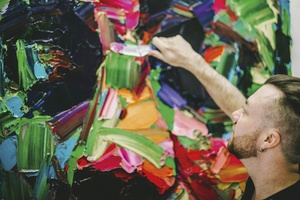
I realised that so much of how we experience visual culture now is mediated in terms of screens and phones, and, so I was thinking my images don’t actually look that different on a screen as they do in real life, but they feel different.
So I thought, what can shift? I wanted to explore the sculptural aspect, the texture and the surface. They have to work as objects. I want there to be an extra experience that happens in the physical realm of where paintings live.
I am interested in the energetic connection that a person experiences when they live with a painting or when they walk into a gallery. I wanted to explore surface as well as content or what I was actually working from. Then I fell totally in love with the sculptural thing, which is totally addictive.
Camille: How do you interpret your paintings?
Jack: I worked out I can make these paintings that work twice – from a distance they appear really clear and look totally like realist paintings. But, as you walk up to it, it dissolves and looks like an abstract painting.
I think there is that amazing thing where you look at an abstract work and you’re in the language of the sensory world. For me when I look at abstract work, I can’t make logical sense of it and I have to react with emotions, which I love.
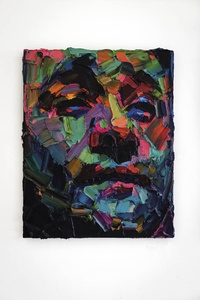
But I also love that we relate to other human bodies and faces and expressions, and we’re constantly looking at each other’s faces to read things. We’re quite sophisticated in our ability to read and interpret emotional landscapes in each other’s faces. We know it really well. When you get a painting that communicates a feeling, you have an instant connection to it.
I’m not really trying to paint a portrait of a person, but rather a specific emotion. Some are based on people; some are out of my head. When I’m painting, that will change heaps. Sometimes their emotion changes throughout the painting process. At some point I almost get the sense of the emotion really clearly – and then I know that’s the painting and I stop.
Camille: You must use a lot of paint in each work?
Jack: Financially it feels risky using so much paint, but then I sold a couple of big pieces and I just love it. I feel like there is quite a lot more to explore with this new way of working. The more I do it, the more there is to learn.
The last painting I make for a show has a whole lot of clues for the next show. I make better work when I follow what’s happening.
Jack Trolove’s work will be on exhibit at Whitespace Gallery in Auckland from 26 September to 22 October.

